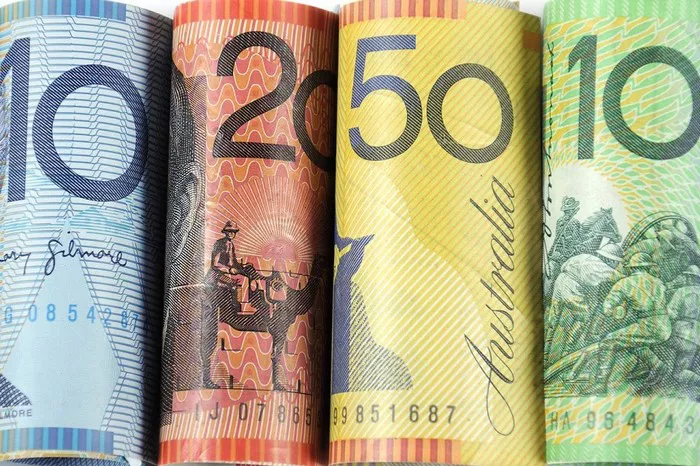The Australian dollar, denoted by AUD or simply A$, is the official currency of Australia and is widely used in international trade and finance. Like many other currencies, the value of the Australian dollar is not fixed and can fluctuate in response to various economic factors. However, the Australian dollar is not entirely free-floating; instead, it is pegged to a range of currencies and influenced by several key mechanisms. Understanding what the Australian dollar is pegged to is crucial for comprehending its value fluctuations and implications for the Australian economy.
Historical Context:
The history of the Australian dollar’s peg dates back to the Bretton Woods Agreement of 1944, which established a system of fixed exchange rates linked to the value of gold. However, this system collapsed in the early 1970s, leading to the adoption of a floating exchange rate regime by many countries, including Australia. Since then, the Australian dollar has predominantly floated freely against other currencies, allowing its value to be determined by market forces.
Reserve Bank of Australia (RBA):
The Reserve Bank of Australia (RBA) plays a pivotal role in managing the Australian dollar and influencing its value. While the Australian dollar is not pegged to a single currency, the RBA’s monetary policy decisions, including interest rate adjustments, can indirectly affect its exchange rate. For instance, raising interest rates typically strengthens the Australian dollar by attracting foreign investment, while lowering interest rates can lead to its depreciation.
Trade Weighted Index (TWI):
Instead of being pegged to a single currency, the Australian dollar is effectively managed against a basket of currencies through the Trade Weighted Index (TWI). The TWI is a measure of the Australian dollar’s value against the currencies of Australia’s major trading partners, weighted according to their importance in Australia’s trade. By tracking the TWI, policymakers can gauge the overall competitiveness of the Australian dollar and adjust monetary policy accordingly.
US Dollar Influence:
Although the Australian dollar is not directly pegged to the US dollar, the USD exerts significant influence on its value due to the dominance of the US dollar in global trade and finance. Movements in the USD/AUD exchange rate can impact Australia’s export competitiveness, particularly in commodities such as coal, iron ore, and natural gas, which are priced in US dollars. Consequently, changes in US economic conditions and monetary policy decisions by the Federal Reserve can affect the Australian dollar’s exchange rate.
Commodity Prices:
As a major commodity exporter, Australia’s terms of trade, particularly commodity prices, can significantly influence the value of the Australian dollar. Higher commodity prices generally lead to increased export revenues and improved terms of trade, strengthening the Australian dollar. Conversely, falling commodity prices can weaken the Australian dollar, as it reduces export earnings and weighs on economic growth prospects.
Economic Fundamentals:
In addition to external factors such as exchange rates and commodity prices, the Australian dollar’s value is also influenced by domestic economic fundamentals, including GDP growth, inflation, unemployment, and fiscal policy. Strong economic performance, characterized by robust growth and low unemployment, tends to support a stronger Australian dollar, while economic downturns can lead to its depreciation.
Speculative Factors:
Speculative trading in the foreign exchange market can also impact the Australian dollar’s value in the short term. Factors such as investor sentiment, geopolitical tensions, and market speculation can lead to sudden fluctuations in the exchange rate, independent of underlying economic fundamentals. Central banks and other financial institutions often intervene in the foreign exchange market to stabilize their currencies and mitigate excessive volatility.
Global Financial Markets:
Developments in global financial markets, including changes in risk sentiment, interest rates, and capital flows, can influence the value of the Australian dollar. In times of market turmoil or heightened uncertainty, investors may seek safe-haven assets, leading to appreciation of currencies such as the US dollar and Japanese yen at the expense of higher-yielding currencies like the Australian dollar.
See Also Where To Invest When The Aussie Dollar Is Falling?
Conclusion:
In conclusion, while the Australian dollar is not pegged to a single currency, its value is influenced by a combination of factors, including the Reserve Bank of Australia’s monetary policy, the Trade Weighted Index, US dollar movements, commodity prices, economic fundamentals, speculative trading, and global financial markets. Understanding these factors is essential for businesses, investors, and policymakers to navigate the complexities of the foreign exchange market and anticipate changes in the Australian dollar’s value. As one of the most traded currencies in the world, the Australian dollar’s exchange rate plays a critical role in shaping Australia’s economic performance and international competitiveness.


